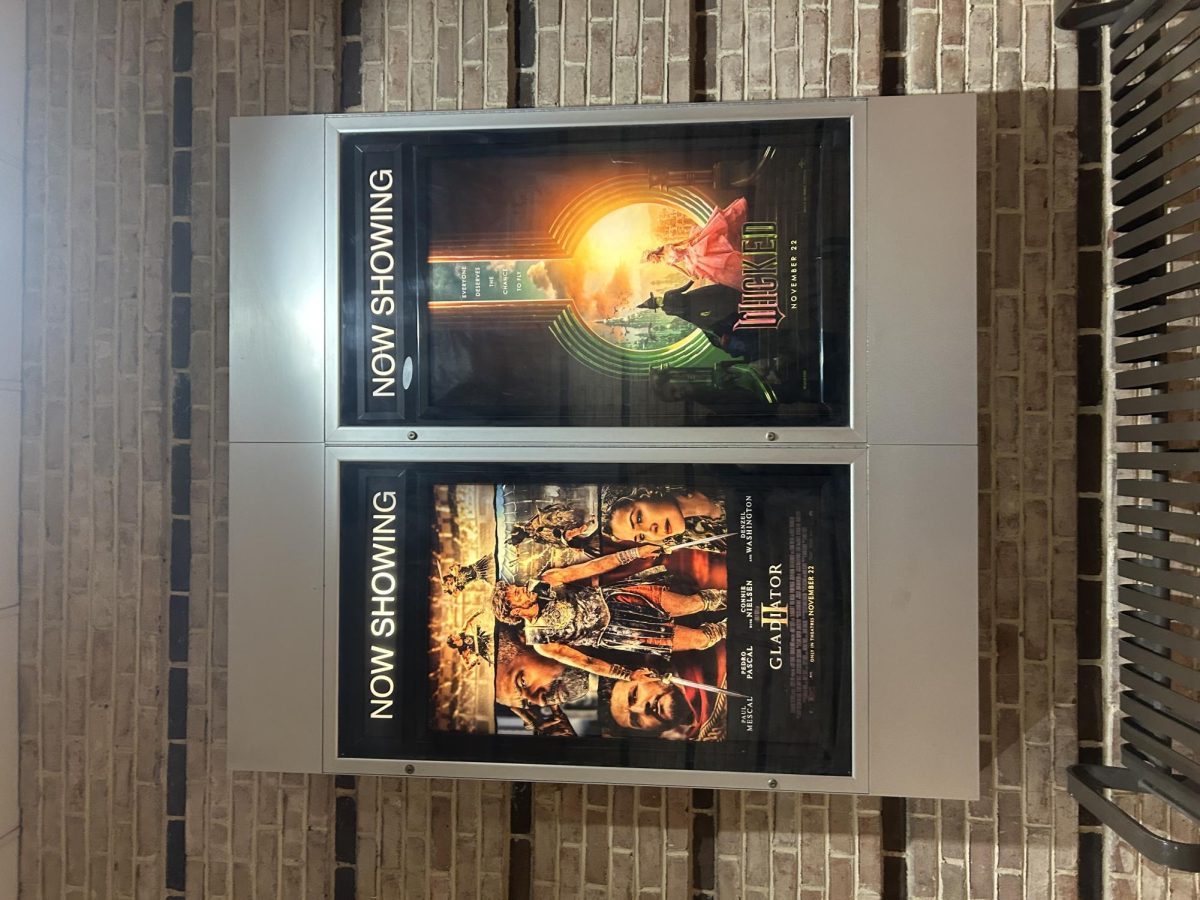Accompanied with feet-sweeping music, perfect angles, and breathtaking costumes, the stars Rachel Zegler and Tom Blyth, playing Lucy Gray Baird and Coriolanus Snow, took the believable story of The Ballad of Songbirds and Snakes and transformed it into something tangible. The movie follows Coriolanus (Corio) Snow, the heir of a once-great Capital family who was brought low because of the war, struggling to hold up the family name with the little-to-no money he has left with the help of his cousin Tigris. For a school project, Snow finds himself thrown into a mentorship for the 10th annual Hunger Games that will force his and District 12’s Lucy Gray Baird’s destinies to collide. The screen-play gives a play-by-play version of Snow transforming, for better or for worse, as he comes to terms with Baird being a responsibility in his life and his self-diagnosed responsibility to his family’s name.
Do you want the good news or bad news about this movie first? I’ll give you the bad news (my perception of bad news) first because there is so little bad news about “The Ballad of Songbirds and Snakes.” The movie’s message was that when all else fails, humans turn to their instincts and become animal-like killers. While some might choose to take that route, I do not agree with the sentiment as a whole but I appreciated it as the driving force behind the movie because it cleared up why Snow acts the way that he does.
The only other thing that picked at my nerves was the similarities between Baird and Katniss Everdeen from The Hunger Games. While the movie mostly stayed clear of making the two characters the same, the beginning of the movie made me wonder if I would be watching Everdeen strut across the scenes instead of the main female character, Baird. I was disappointed in that line of thought, thankfully, because as the movie progressed, Baird’s character and personality became unique to her person.
Even though I didn’t enjoy the ties between Everdeen and Baird at the beginning, the sometimes flamboyant, often melancholy and ominous songs like “The Hanging Tree” that show up in both “The Ballad of Songbirds and Snakes” and “Mockingjay” satisfied me immensely. Not only does “The Ballad of Songbirds and Snakes” show the song’s origin, but it also shines a light on the exigence of the song. Plus, the performance of the songs in the movies wasn’t so-so: Zegler (Baird) put it all out for the songs, weaving them into the movie’s storyline like never before.
Not only did the songs make the movie come to life, but the movie made the book come to life too. Following closely along with the original plot from the book, “The Ballad of Songbirds and Snakes” took the sometimes confusing plot and made it into something believable. Not only did it clear a path for why Snow did what he did, but it also took the songs, as mentioned before, the costumes and the different characters, embroidering them into an exquisite tapestry that was the movie. It kept pace with what I would have expected from the book, took two different personalities, and worked with them together on-screen, going above and beyond the previous generic dystopian movies in the series.
Which brings me to my last sentiment: The approach of this movie was much better than the other Hunger Games movies. This is mostly due to the better plot of the book, which follows two brazenly different personalities. These two personalities are, in a sense, thrown into the arena together, whether they want it or not. Rather than kicking up the dust of the old debate about who is better for Everdeen in the sequels to The Ballad of Songbirds and Snakes (Gale or Peeta?), the newest movie displays the novel personalities of Baird and Snow and focuses on their struggles, both the individual burdens and the ones that they share. All in all, the movie is a snowstorm of actions and reactions. Once the snow stirred up by the action in the movie settles, the movie finishes the story with a sparkling clarity that the book struggled to procure.






